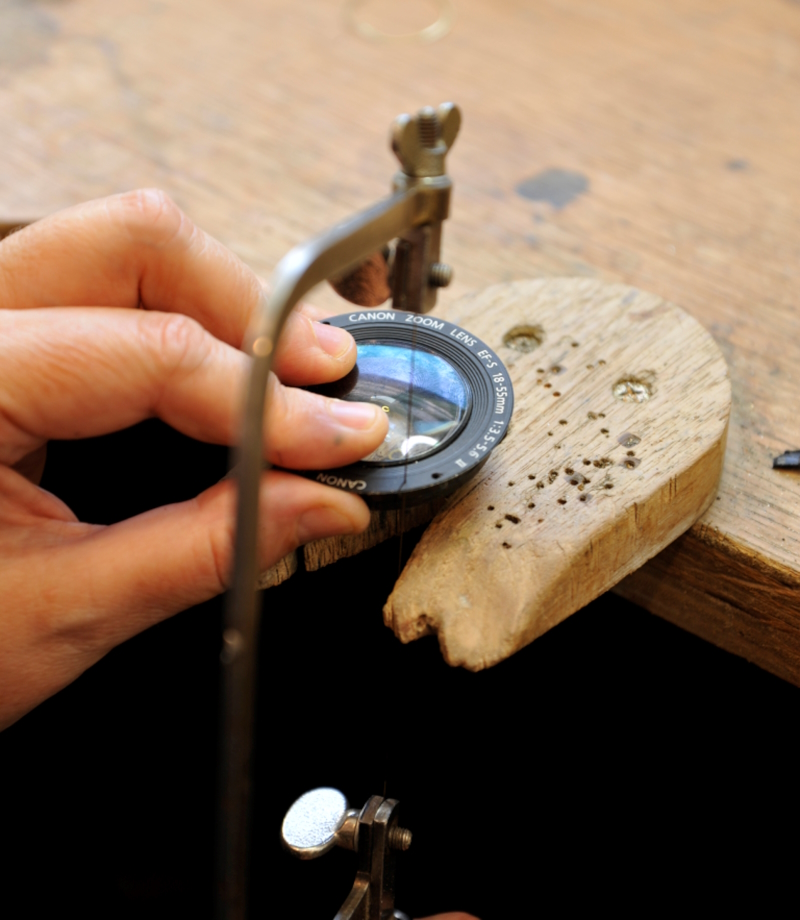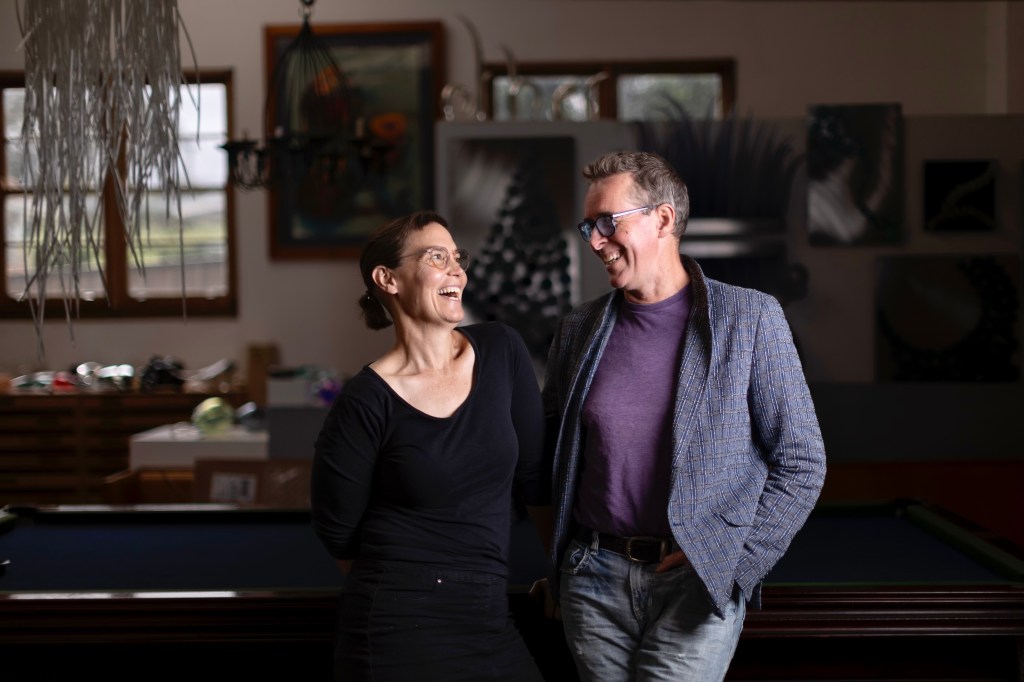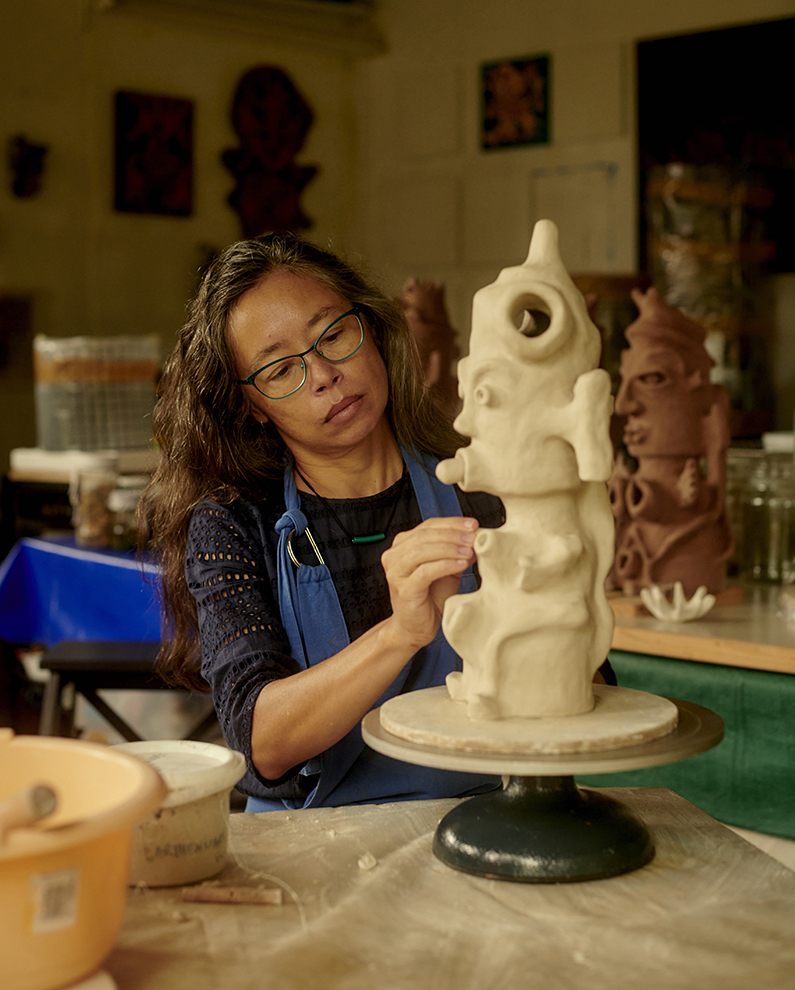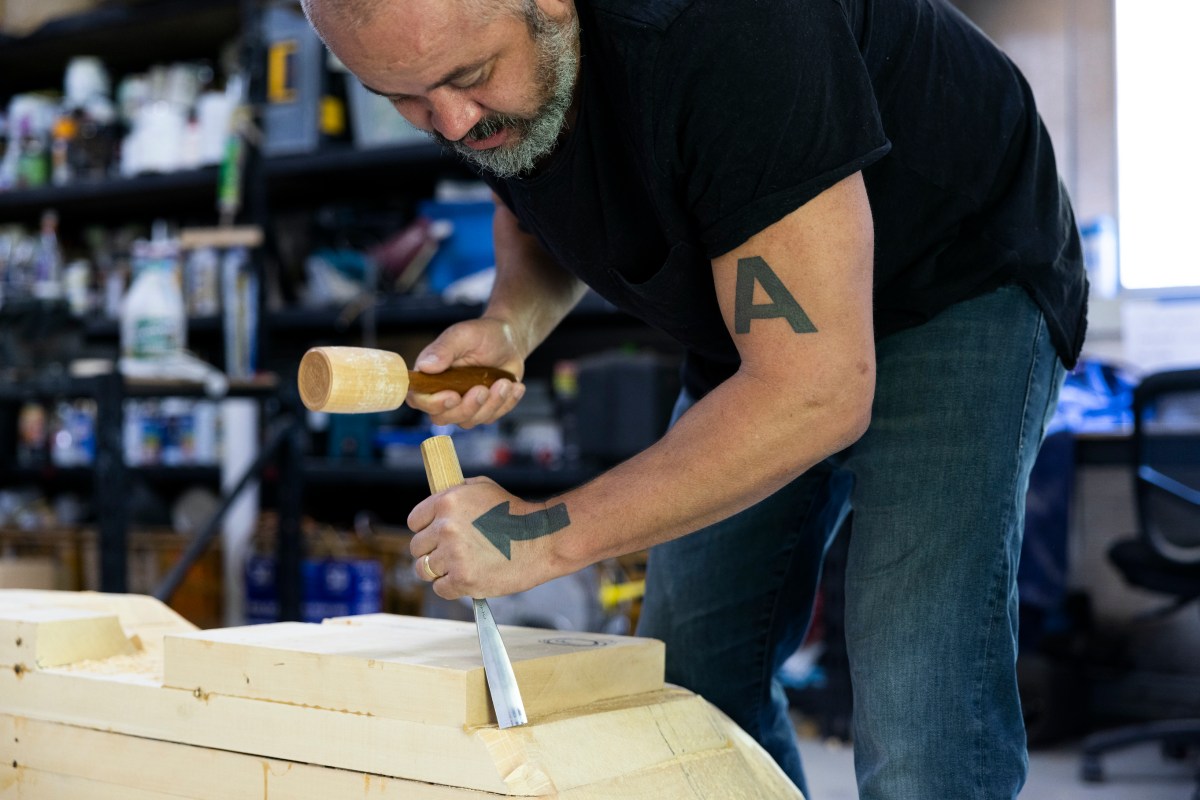The pandemic was tough on artists but, in many ways, it is now that the pandemic’s long tail impact is being felt. With a compounded rise in costs, including materials, energy, insurance and shipping, many artists are ‘working tough’, and there is little relief in sight.
ArtsHub catches up with a number of artists working across mediums and geography, who share their experiences and advice for bunkering down when costs are rising.
How real is the impact of rising costs?
Sculptor Abdul-Rahman Abdullah says the impact of rising costs is very real. He tells ArtsHub: ‘Whenever I’m asked to be a part of a project, it’s the first question I ask. I’ve had to reduce the amount of work in shows because budgets haven’t kept pace with rising costs. This year I’ve had to become far more strategic about the scale and complexity of work that I can make; it’s a real balancing act between what I want, what is achievable and what are the potential returns.’
He continues: ‘I put so much pressure on myself to make every moment in the studio count, I literally can’t afford any missteps. I think that the real artistry in this job – is still having this job tomorrow.’
It is a view supported by Sydney-based photographer, Sandy Edwards: ‘I work as a freelance curator and producer with photographers wanting to exhibit their work. So what I have mainly noticed, since pre-COVID, is that there are fewer artists producing exhibitions for various reasons, one of which must be financial.
Australian Glass artists, Matthew Curtis and Harriet (Harry) Schwarzrock – who share a studio outside the city centre – are feeling the pressure four-fold: ‘We have felt noticeable increases in many areas of our practice, from labour hire, to energy prices, insurances and most notably shipping,’ they say.
Jeweller, Blanche Tilden agrees. ‘Across the board, materials and day-to-day running costs have increased – petrol, freight, bottled LPG (liquefied petroleum gas) and oxygen, electricity. This has made me pull back, be cautious about spending money on non-essentials and think carefully about committing to new projects with upfront costs.’
Jump to:
Material costs forcing a back-to-basic approach
Known for his marble sculptures, which are shown internationally, Alex Seton understandably has noticed the rise in material costs. ‘When I want to have things made, not off the shelf, some Australian suppliers and manufacturers are unapologetically gouging their customers, and it’s common to see prices vary wildly place to place, and week to week, for no reason,’ he tells ArtsHub.
‘This squeeze really is promoting a take-the-money-and-run attitude,’ he adds.

Also working with high-end materials is Tilden. She says: ‘I have been stocktaking the materials I have collected, and I am thinking of new ways to use the materials I already have. I have also been approached by clients with jewellery and objects that have personal significance or sentimental value, and I’ve used these objects as the starting point for a conversation about a new piece of jewellery, resulting in some rewarding commissions.’
She adds, ‘Working with clients to give objects a second life as a new piece of jewellery is a creative challenge that I really enjoy.’
Coming from a very different position, ceramicist Mai Nguyen-Long says, ‘[My] practice has always been about working economically. This approach has shaped my studio philosophy, so I don’t feel a huge change to that mindset. I’ve always had anxiety about production costs.’
Rise in freight costs inhabiting career opportunities
‘I’ve felt the pressure in nearly every aspect of my life, but for me right now the cost of freight is really weighing heavily,’ says Abdullah, who is located in remote Western Australia (WA).
‘Participating in a national dialogue as a sculptor living in WA has its challenges, but seeing far more resources go toward freight companies than to artists in any given project is a particularly fun one. We also have far fewer options and much larger distances to cover on this side of the country,’ he continues.
And when it comes to sending artwork overseas, Seton says it most simply. ‘Forget about it,’ he tells ArtsHub. ‘Prices have not been brought down since significant ramping during COVID, and now there are significant hikes again, just as it was starting to level out. All of this making Australian artists an extremely expensive option for international commercial gallery representation, overseas collectors and exhibitions in international institutions.’
He says the biggest impact he has felt so far is fuel and energy costs. ‘Just to move the large blocks of marble and other sculpture materials around is really affecting the costs of longer-term larger projects, completely blowing out contingency budgets. On the smaller scale, [the cost of] just sending artworks out of the studio has increased sharply, and you can see the Australian art-moving companies really struggling under fuel costs – Australia has so many road miles between its cities and regional hubs.‘
Curtis has also felt the impact of freight cost blowouts on his international career, having exhibition in the US for many years. ‘The increases in shipping have changed our practice significantly. For Matthew, whose career has been predominantly exhibiting in the US, it has generated a rethink toward other income streams, most notably teaching and working on research projects at the Canberra Glassworks,’ says Schwarzrock, adding that the pair have turned their ‘attention to working on more local projects rather than international exhibitions’.
Read: Why is the cost of art-making surging?
‘For Harry, this increase in shipping has inversely meant delaying purchasing specialised equipment and materials due to inflated freight prices,’ adds Curtis, referring to his partner’s speciality in blowing glass neon sculptures.

Feeling the burn of energy costs
Blowing glass is notoriously expensive at the best of times, let alone during financially tight periods. The saying goes, that blowing glass is just throwing dollars into the furnace flames. On the top of the energy costs, glass artists also have to contend with the rise in furnace hire costs and assistant fees.
Some time back, Curtis and Schwarzrock sought to minimise those expenses by setting up their own hot shop. They tell ArtsHub: ‘We have always maintained and tinkered with our own studio equipment, so these practices help keep things running. We use and reuse more recycled glass, which is a good thing. We are more strategic about energy use. We are more strategic for when we pay for assistance. In truth, this sees us doing longer hours and more work.’
They even attribute their ‘studio hounds with the job title of being our mental health officers’.
Read: Artists remain vulnerable over insurance cuts
The pair continue: ‘We have been in the fortunate position where we can mitigate some energy costs through the installation of solar on our home-studio roof. We know this isn’t a reality for many artists. It’s on our to-do-list to shop around for insurance savings, but that all takes time.’

Like all ceramicists, Nguyen-Long is expecting to feel the wallop of energy costs with her kiln use. She recently installed a large three-phase electric kiln in her home studio. ‘It’s a bit early to tell the precise impact as I am new to electric kiln firing. Although, I suspect the scariest impact will be on my firing bills,’ she says.
‘What has changed is that my goals of being as organised as possible are now being directed towards acquiring more knowledge and experience in a kiln-clay practice. After some modest experiments, I feel buoyant that I will be able to keep my clay practice going, as long as I keep pushing myself beyond my comfort zone. For instance, I have learned to find amazement in the results of single firings and not only double firings. I’m really excited about this, and keen to continue exploring the possibilities. It’s a bonus if this can make a dent in my electricity bill. I have been looking into solar for some time now but, unfortunately, it’s not an immediate possibility for me,’ she continues.
Like Nguyen-Long, Curtis and Schwarzrock have situated their studio at home to reduce costs such as rent. They say: ‘These cost of studio-and-living concerns have made us more open to helping others when we can. We try to see the silver lining – that we are in a fortunate position to be community-minded, and can assist other artists, to help all of us to continue to work creatively.’
Nguyen-Long says: ‘The biggest perceptible adjustment right now is that I find myself having to be more jealous of my studio time than ever, so that I can focus on production efficiency – such as only firing when the kiln is full. This means I’m not going to events as much because I’m always working to try to plan more efficient firings. It’s a concern as I need my friends and family.’
Wisdoms on being frugal while remaining creative
Abdullah laments: ‘I don’t think we can do much to keep costs down; making art is a hungry beast that must be fed.
‘My only advice would be to make everything count, to be doubly conscious of how time and energy is spent and relentless in pursuit of your own excellence. Other than that it’s all about scheduling, good communication and knowing when to say no,’ he continues.
Edwards is practical in her advice: ‘I have started to go through all my expenses and make decisions about what is essential monthly. I am minimising all necessary costs including insurance, subscriptions, luxury items such as dinners out, clothes, even coffees! As a photographer, technology is expensive. There are many expenses that need to be considered and analysed for necessity. I am experiencing this to be a very tough time financially and it looks as if it could get harder.’
Curtis and Schwarzrock speak of a reality to which many artists have had to adjust. ‘We are both relying on secondary income and, although we are both working toward exhibitions, we work toward making objects for annual open studio events and end of year markets as a supplementary income stream.’
Tilden says that while glass and jewellery are both expensive studio practices, she makes ‘jewellery from repeated components’.
‘So, I am always looking for ways to be more efficient with my time, by streamlining processes. This approach flows over into the materials and studio consumables I use as well.’
She recommends: ‘Planning carefully, buying tools and supplies when they are on sale, grouping tasks in batches, minimising waste. These “common sense” strategies are more important than ever, and help to sustain my studio practice.’
For Seton, his advice is also in rethinking waste. ‘We recycle 100% of our marble waste now, working with the young designers and makers of Re. Studio Collective and the Natural Brick Company to supply them with our rubble and dust for them to convert into terrazzo tiles, breeze blocks and furniture. We started doing this many years ago motivated by ecological concerns – painters using our dust for gesso and sculptors for castings – and it’s evolved.’
However, he warns: ‘I watched tip and disposal fees go through the roof recently; I’m glad we found a solution that was both economic and environmentally friendly… You’d think I’d make lighter work, but unfortunately I love sculpture, and the logical costs are always something to be considered carefully. Unfortunately, I think it means working harder at the moment, and being more careful with the purse strings.’
Nguyen-Long concludes: ‘Most of all, don’t let the anxiety or media hype wear you down. Seek help, even if it’s not financial, but emotional psychological support … there are support services out there. Sometimes just being listened to helps.’
She continues: ‘Fear of price hikes reminds me to keep looking for ways of being more efficient in the production of my work. Whatever comes next is simply the natural progress of the development of my clay practice. My creative practice has always responded to life’s changing circumstances and will continue to do so. As long as I can continue to make things, somehow, I hope I’ll find a way through. There is no easy solution. It’s a continual learning curve.’





